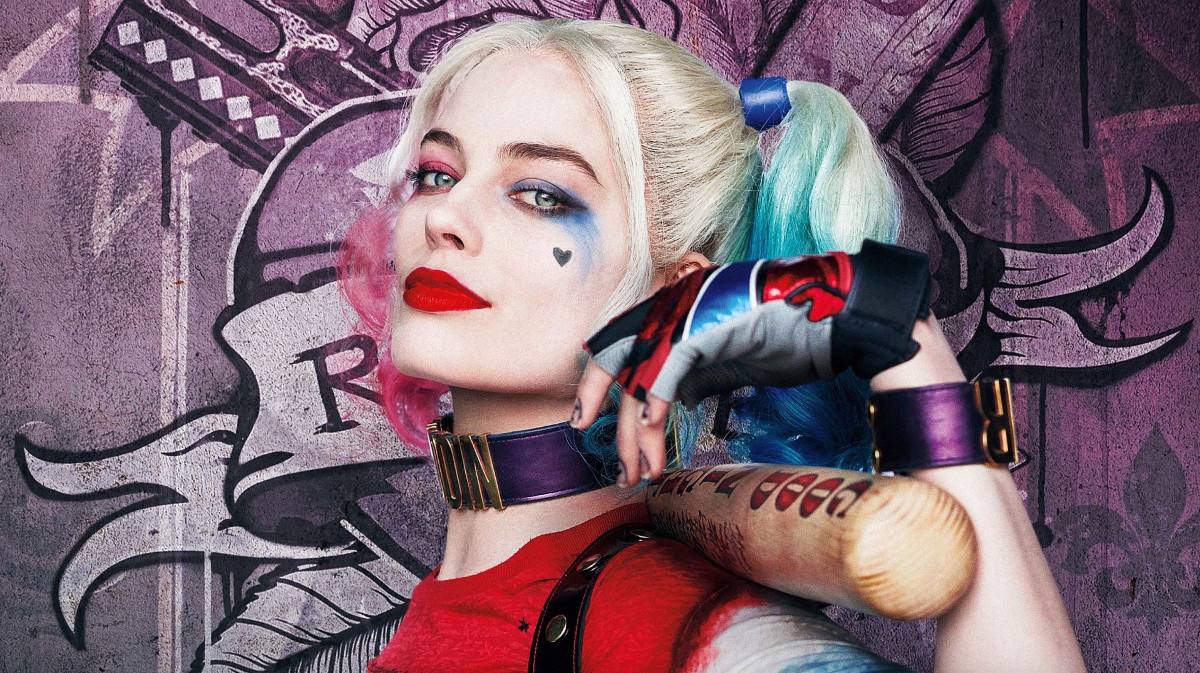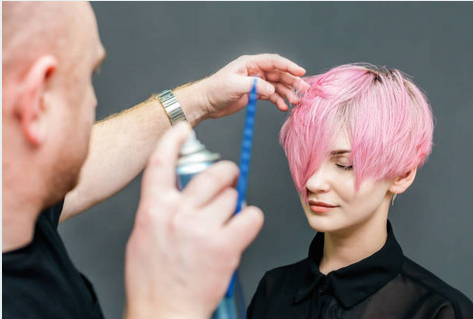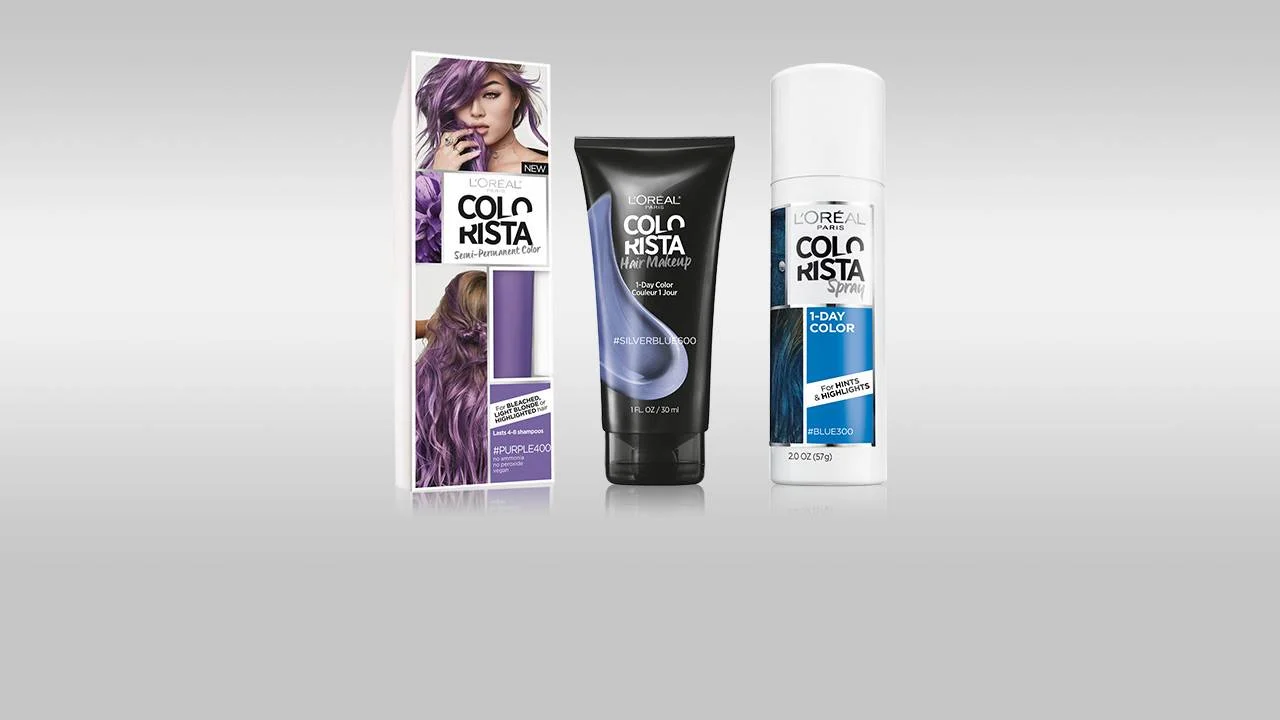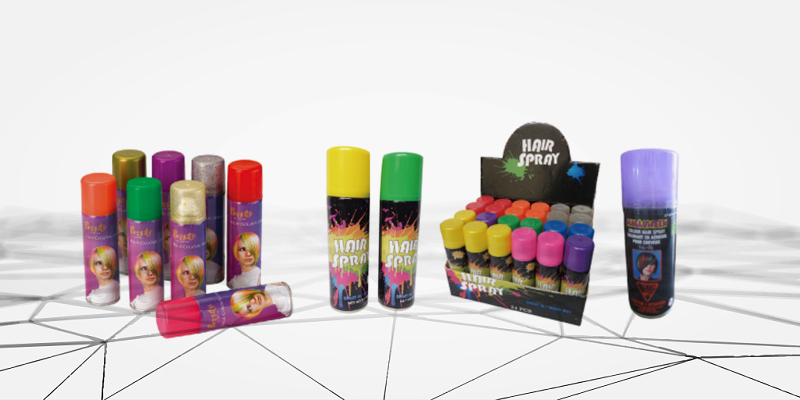Maybe you had a make up when you were in Halloween’ Day. How about your hair? Have you ever thought about change your hair color or make you look more fashionable? Now, take a look at our featured products, I will bring a general idea about what hair color spray is.
Hair coloring, or hair dyeing, is the practice of changing the hair color. The main reasons for this are cosmetic: to cover gray or white hair, to change to a color regarded as more fashionable or desirable, or to restore the original hair color after it has been discolored by hairdressing processes or sun bleaching.
THE TYPES OF HAIR COLOR SPRAY
The four most common classifications are permanent, demi-permanent (sometimes called deposit only), semi-permanent, and temporary.
Permanent
Permanent hair color generally contains ammonia and must be mixed with a developer or oxidizing agent in order to permanently change hair color. Ammonia is used in permanent hair color to open the cuticle layer so that the developer and colorants together can penetrate into the cortex. The developer, or oxidizing agent, comes in various volumes. The higher the developer volume, the higher the “lift” will be of a person’s natural hair pigment. Someone with dark hair wishing to achieve two or three shades lighter may need a higher developer whereas someone with lighter hair wishing to achieve darker hair will not need one as high. Timing may vary with permanent hair coloring but is typically 30 minutes or 45 minutes for those wishing to achieve maximum color change.
Demi-permanent
Demi-permanent hair color is hair color that contains an alkaline agent other than ammonia (e.g. ethanolamine, sodium carbonate) and, while always employed with a developer, the concentration of hydrogen peroxide in that developer may be lower than used with a permanent hair color. Since the alkaline agents employed in demi-permanent colors are less effective in removing the natural pigment of hair than ammonia these products provide no lightening of hair’s color during dyeing. As the result, they cannot color hair to a lighter shade than it was before dyeing and are less damaging to hair than their permanent counterpart.
Demi-permanents are much more effective at covering gray hair than semi-permanents, but less so than permanents.
Demi-permanents have several advantages as compared with permanent color. Because there is essentially no lifting (i.e., removal) of natural hair color, the final color is less uniform/homogeneous than a permanent and therefore more natural looking; they are gentler on hair and therefore safer, especially for damaged hair; and they wash out over time (typically 20 to 28 shampoos), so root regrowth is less noticeable and if a change of color is desired, it is easier to achieve. Demi-permanent hair colors are not permanent but the darker shades in particular may persist longer than indicated on the packet.
Semi-permanent
Semi-permanent hair coloring involves no developer (hydrogen peroxide) or ammonia, and is thus less damaging to hair strands.
Semi-permanent hair color uses compounds of lower molecular weight than are found in temporary hair color dyes. These dyes are only able to wedge under the cuticle layer of the hair shaft only. For this reason, the color will survive limited washing, typically 4–8 shampoos.
Semi-permanents may still contain the suspected carcinogen p-phenylenediamine (PPD) or other related colorants. The U.S. Environmental Protection Agency reported that in rats and mice chronically exposed to PPD in their diet, the PPT appears to simply depress body weight of the animals, with no other clinical signs of toxicity observed in several studies.
The final color of each strand of hair will depend on its original color and porosity. Because hair’s color and porosity across the head and along the length of a hair strand, there will be subtle variations in shade across the entire head. This gives a more natural-looking result than the solid, all over color of a permanent color. Because gray or white hairs have a different starting color than other hair, they will not appear as the same shade as the rest of the hair when treated with semi-permanent color. If there are only a few grey/white hairs, the effect will usually be enough for them to blend in, but as the gray spreads, there will come a point where it will not be disguised as well. In this case, the move to permanent color can sometimes be delayed by using the semi-permanent as a base and adding highlights. Semi-permanent color cannot lighten the hair.
Temporary
Temporary hair color is available in various forms including rinses, shampoos, gels, sprays, and foams. Temporary hair color is typically brighter and more vibrant than semi-permanent and permanent hair color. It is most often used to color hair for special occasions such as costume parties and Halloween.
The pigments in temporary hair color are high molecular weight and cannot penetrate the cuticle layer. The color particles remain adsorbed (closely adherent) to the surface of the hair shaft and are easily removed with a single shampooing. Temporary hair color can persist on hair that is excessively dry or damaged in a way that allows for migration of the pigment to the interior of the hair shaft.
FEATURED
Alternative color.
A person’s hair being colored light-blue and his beard being colored dark-blue respectively
Alternative hair coloring products are designed to create hair colors not typically found in nature. These are also referred to as “vivid color” in the hairstyling industry. The available colors are diverse, such as the colors green and fuchsia. Permanent alternatives in some colors are available. More recently, blacklight-reactive hair dyes have been brought to market that fluoresce under blacklights, such as those often used at nightclubs.
The chemical formulae of alternative color dyes typically contain only tint and have no developer. This means that they will only create the bright color of the packet if they are applied to light blond hair. Darker hair (medium brown to black) would need to be bleached in order for these pigment applications to take to the hair desirably. Some types of fair hair may also take vivid colors more fully after bleaching. Gold, yellow and orange undertones in hair that has not been lightened enough can muddy the final hair color, especially with pink, blue and green dyes. Although some alternative colors are semi-permanent, such as blue and purple, it could take several months to fully wash the color from bleached or pre-lightened hair.
Maintaining hair color
There are many ways that people can maintain their hair color, such as:
- Using color-protecting shampoos and conditioners
- Using sulfate-free shampoo
- Using purple shampoos and conditioners to maintain or enhance the blond color in their hair
- Using leave-in treatments with UV absorbents
- Getting deep-conditioning treatments to smooth and add luster
- Avoiding chlorine
- Using heat protecting products before using styling appliances
So after you read all the passage, I think you would get a whole general idea about it.
Post time: Nov-02-2021















